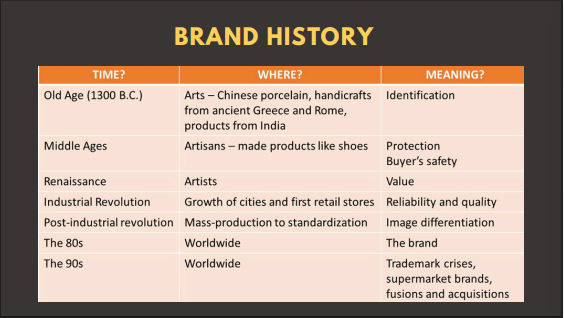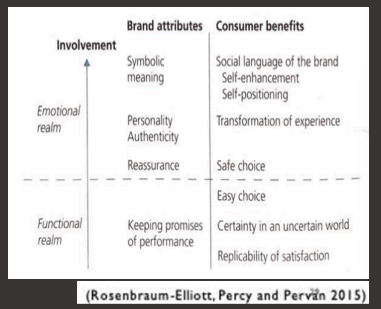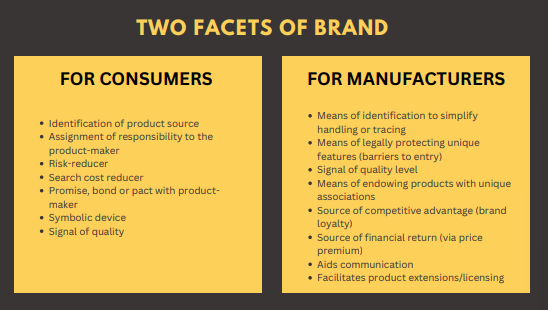Lecture 1: Introducing Brands and Branding
1/21
There's no tags or description
Looks like no tags are added yet.
Name | Mastery | Learn | Test | Matching | Spaced |
|---|
No study sessions yet.
22 Terms
Six Steps to Manage a Brand
Assess
Plan
Create
Align
Link
Understand
What is a Brand?
A brand is a name, term, symbol, design or combination of these elements that should identify goods or services of a company and differentiate them from competitors (AMA).
Differentiate Between a Product and a Brand
A product becomes a brand when the physical product is augmented by something else - images, symbols, perceptions, feelings - to produce an integral idea greater than the sum of its parts (Batey)
Four Key Differences Between a Product and a Brand
A product is bought for what it does; a brand is bought for what it means
A product occupies shelves, a brand occupies consumers minds
A product can become outdated; a brand is timeless
A product can be copied; a brand is unique
What is Branding
Branding means much more than just giving a brand name and signalling to the outside world that such a product or service has been stamped with the mark and imprint of an organisation. Branding, though, is not about being on top of something, but within something (Kapferer)
Origin of Branding
Brand was originally referred to as a piece of burning wood in Scandanavia. Owners marked their livestock to identify them.
Brand History

What Led to the Rise of Brands?
Mass Production
Transportation (From Local to Global)
Mass Communication
Consumer Purchasing Power
Intensified Competition & Market Saturation
Three Stages of Branding
The Commodity Stage
Differentiation through Branding
Brand as an Icon - Building a relationship with customers
What Distinguishes a Brand
What distinguishes a brand from an unbranded commodity counterpart and gives it its equity is the sum total of consumers’ perception and feelings about the product’s attributes, about how it performs, about the brand name, and about the company associated with producing it
Equity Definition
the sum total of consumer’s perceptions and feelings about the product’s attributes
Brand Association
anything linked in memory to a brand
Brand Image
a set of associations, usually organised in some meaningful way
Reasons Why People Consume Brands
We buy brands based on symbolic representation, shared values, meanings
We buy brands based on our identity (the actual self) or the identity we wish to project or communicate to others (ideal/social self)
Brands can take a unique meaning that supports our daily lives or even enhances our lives
Meanings of Brands
Consumers view a brand as an important part of the product, and branding can add value to a product. Consumers attach meaning to brands and develop relationships. Brands have meanings well beyond a product’s physical attributes.
Social Psychology of Brands (Rosenbraum-Elliot et al)

Two Facets of Brand

Who Makes the Brand?
Influencers
Company
Popular Culture
Consumers
Brand Dimensions
Brand as Asset
Brand as Strategy
Brand as Corporate Culture
Brand as Cultural Phenomenon
Brand as Consumer Identity
Brand as Consumer Identity
Extended Self
Brand Communities
Brand Relationships
Brand Love, Brand Loyalty
Brand As Strategy
Vision
Mission
Values
Personality
Logo & Visual Identity
Portfolio & Architecture
What are Brands For?
A sign of quality
A way to differentiate yourself in a crowded market
A sign of dependability in a global world
A sense of belonging
A financial instrument